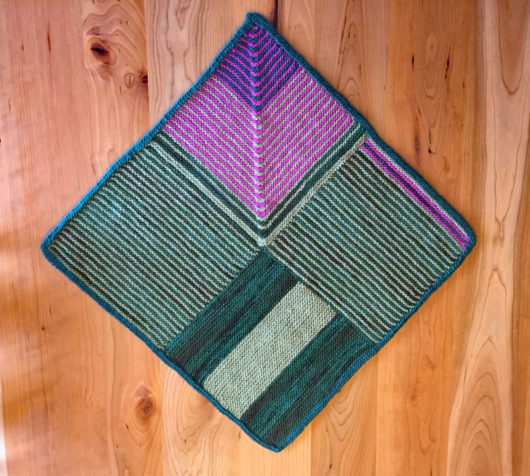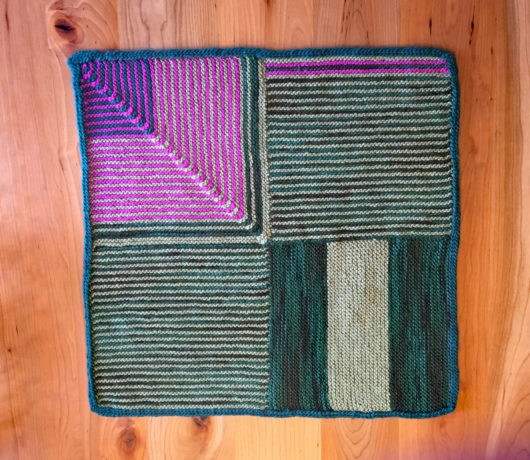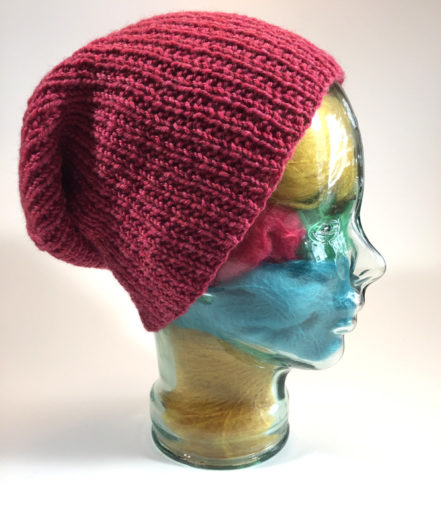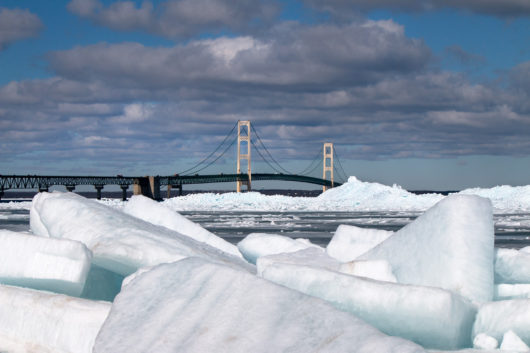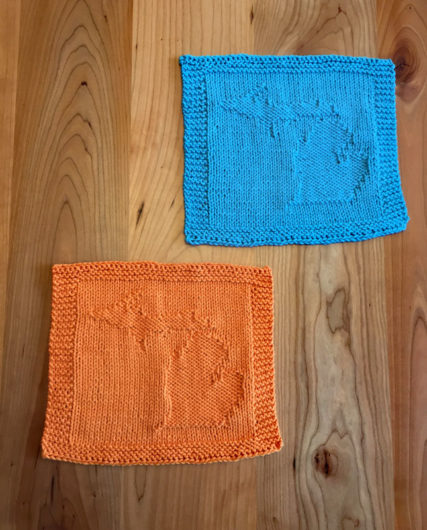Since past is often prologue, you’re probably thinking that I’m up to my old tricks and have knit more dishcloths. Actually, I have been knitting dishcloths. But these are not dishcloths. And they aren’t potholders either. These are sized at 22 inches by 22 inches. Here’s a very big hint:
Yep, cat bed blankets!
Feisty is one of my brother Tom’s cats. This is day one with the new blankie and Feisty’s enjoying it already! Quite unexpected because, well, because cats don’t just do what you want them to. Pretty much only they know their own mind.
Here’s Halo, also enjoying the new nest.
I have a theory about what it is about these blankets that make them cat magnets. (And the theory has nothing to do with catnip.)
But first, I need to give credit where it’s due. With some modifications–more on that in a minute–this is Donna Druchunas’s Garter Stitch Cat Shelter Blanket, a freebie available through Ravelry. I knit mine in Brown Sheep’s Lamb’s Pride Worsted. That would not be a choice for a shelter, where acrylic is king. But for pampered kitties whose owners don’t mind dealing with wool, it’s a good choice. When it’s time to wash the blankets, my brother will put them inside a pillow case (pinned closed) and will wash them as roughly as possible. They will look different after washing, but they’ll still be attractive and adequately sized. After the first wash, they won’t need any special treatment. Methinks the cats will still recognize and enjoy them after they’ve felted, even though they’ll be pads more than blankets.
Here’s my modifications on the pattern.
- Instead of working the blanket at a superbulky weight of 2 stitches to the inch, I used a worsted weight at 4 stitches (and 8 rows) to the inch.
- For Square 1-3, I cast on (or picked up) 48 stitches and worked for 48 garter ridges (96 rows).
- I worked a few random rows of color, not so much because I planned it as that I thought I would run out of yarn.
- For the final square, I picked up (and knit) 48 stitches on the left side of Square 3 and 48 on the top of Square 1 and marked the middle stitch. Pick up the stitches looking at the right (the public) side. Work on circular needles on this square. Count that pick-up row as Row 1. Row 2, knit. Then every right-side row: knit to within 2 stitches of the center marker, K2 together. Slip the marker. Reverse the next stitch on the needle and then K2 together through the back loops (including the flipped stitch and the next one). Knit the remainder of the row. Decrease this way at the center of every right-side row. Knit every wrong-side row. When 2 stitches remain, knit them together. You end up with a square the same size as the other squares.
- I worked an “applied I-cord” border. Cast on 4 stitches on double points. Start working the I-cord at a corner. Slide the stitches and knit 3 stitches, slip the next stitch (purlwise), yarn over, pick up and knit 1 stitch from the edge. Pass the yarn-over over the picked-up stitch. Then pass the slipped stitch over the picked-up stitch. Repeat the bolded directions until you’ve knit the entire border. The yarn over covers any color blip that would otherwise appear. I picked up one stitch for every garter ridge, picking up the strand between the garter bumps. It will probably look best if you work it looking at the wrong (nonpublic) side. For the pink blanket I worked looking at the wrong side. For the green one, I worked looking at the right side. At the corners, I worked an extra pickup or two. Graft/sew the beginning of the I-cord to the end of it.
Oh. You might still be wondering about that theory of mine for why these turn out to be cat magnets. I think the cats like the yarn. Lamb’s Pride is seriously nice and scratchy. It’s 85% wool and 15% mohair. Maybe it’s the mohair that does it. My two cats, J. Eddie and Hoover, used to love their Lamb’s Pride blankets! I didn’t have the Druchunas pattern to work from then. I just knit them plain garter stitch pads. The cats snuggled on them contentedly.

